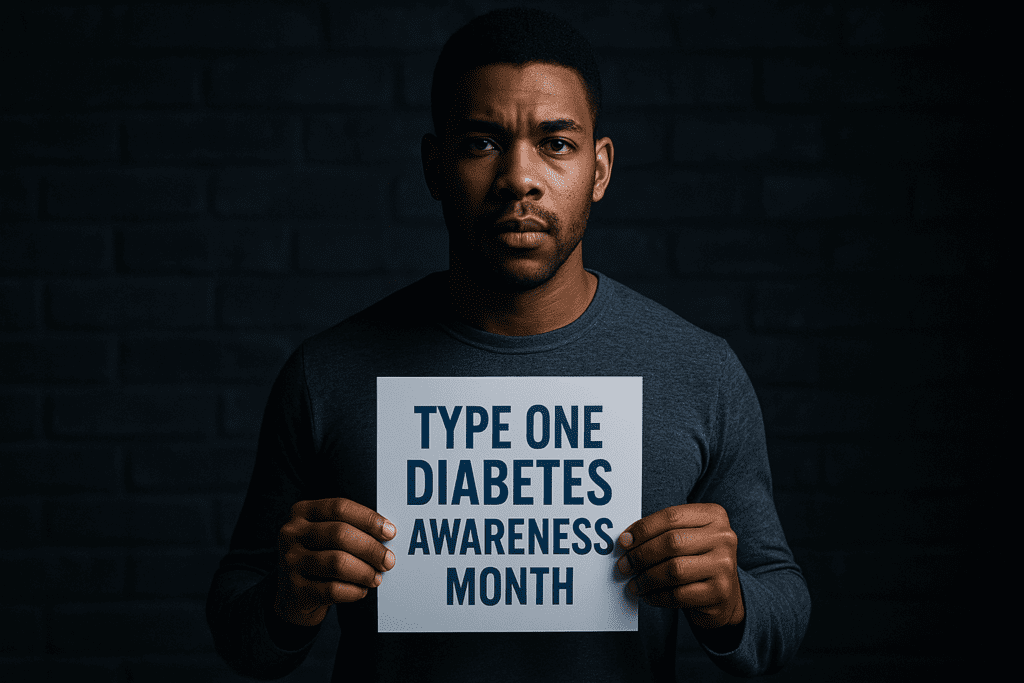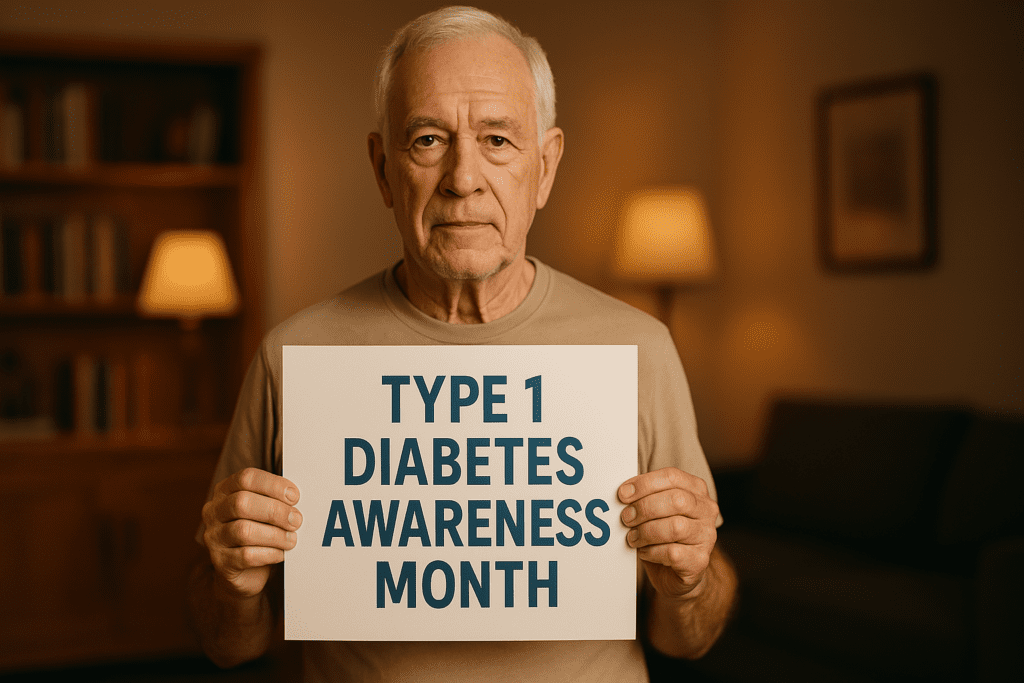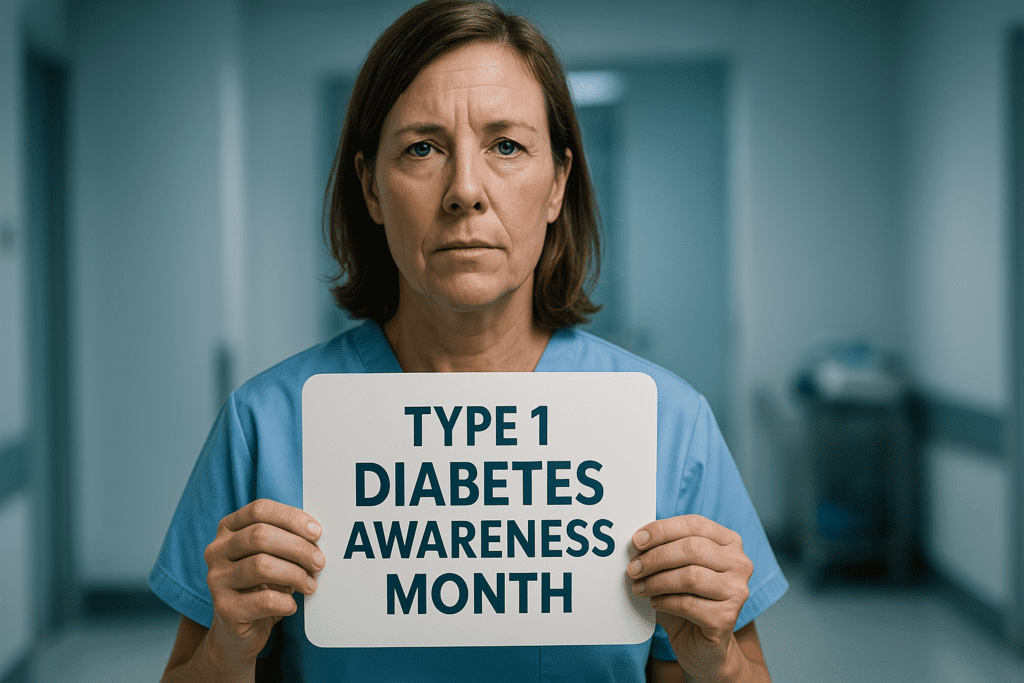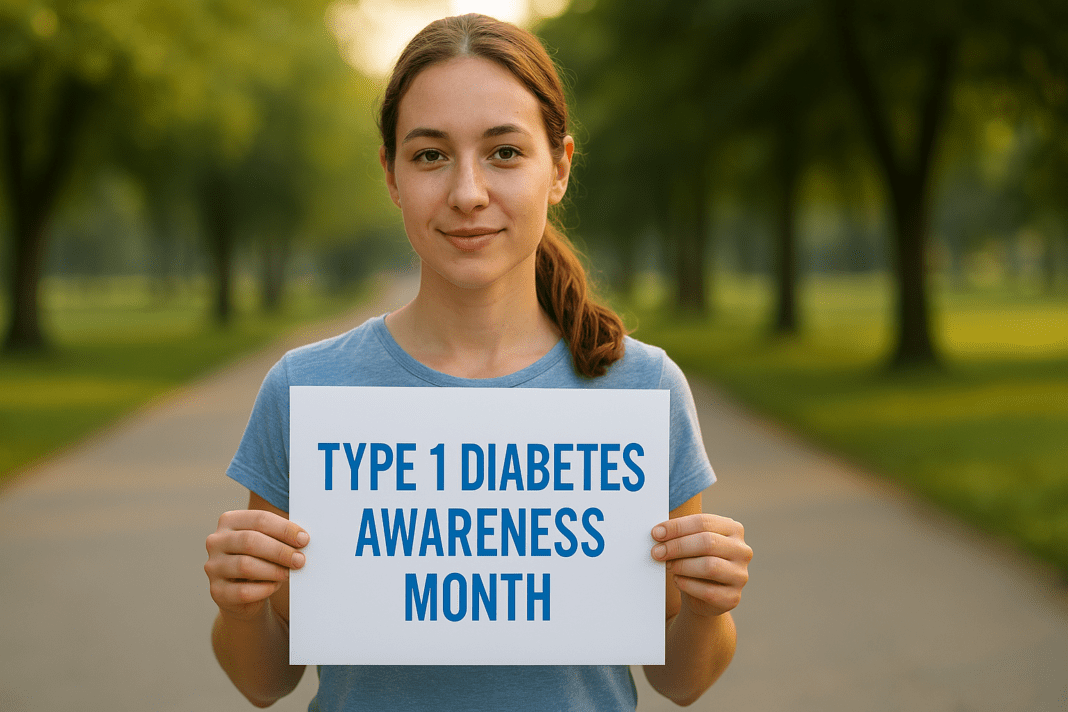Introduction: The Growing Significance of Type One Diabetes Awareness in Public Health
Public health awareness campaigns have long served as a vital tool in shaping community knowledge, inspiring preventive action, and influencing policy. Among the most impactful are those centered around chronic illnesses that often remain misunderstood despite their severity. One such condition is type one diabetes (T1D), a lifelong autoimmune disease that demands rigorous daily management yet is frequently overshadowed by the more common type two diabetes. In recent years, a wave of new research has begun to illuminate the measurable benefits of strategic awareness campaigns designed to elevate public understanding of T1D. These findings underscore why initiatives like Type One Diabetes Awareness Month have become not just symbolic gestures but essential mechanisms for improving health outcomes and social support.
You may also like: Breakthroughs in Current Diabetes Research: What the Latest Studies Reveal About Treatment and Prevention
As we enter a new era of precision medicine and population-level disease prevention, the role of awareness campaigns must be examined through a more evidence-based lens. This article delves into the latest scientific studies evaluating the outcomes of T1D awareness initiatives, including shifts in public perception, early diagnosis rates, funding for research, and support for affected individuals. It explores how increased T1D awareness helps dismantle myths, promotes mental and emotional resilience in patients, and catalyzes changes at institutional levels. Crucially, it also highlights how icons like the type 1 diabetes logo serve as both symbolic and practical tools for spreading knowledge in a visually-driven society.
Understanding Type One Diabetes and the Public Misconception Gap
Type one diabetes is characterized by the autoimmune destruction of insulin-producing beta cells in the pancreas, leading to a complete dependence on exogenous insulin for survival. Unlike type two diabetes, which is often associated with lifestyle factors and insulin resistance, T1D typically manifests in childhood or adolescence and has no known preventative measures. Despite its severity, many people—including healthcare professionals outside endocrinology—still confuse or conflate it with type two diabetes, resulting in misunderstanding, stigma, and insufficient support.
This confusion underscores the necessity for effective public education. Studies show that fewer than half of adults in the general population can accurately describe the differences between T1D and type two diabetes. This knowledge gap can have far-reaching implications, from delayed diagnosis in children exhibiting early symptoms to inadequate resource allocation in public health budgets. When awareness is low, myths flourish—such as the idea that sugar consumption causes T1D or that children outgrow the disease. Effective T1D awareness campaigns directly confront these misconceptions, using storytelling, data visualization, and advocacy to reframe the public narrative around type one diabetes.

The Evolution and Impact of Type One Diabetes Awareness Month
Type One Diabetes Awareness Month, observed every November, serves as a concentrated period for education, advocacy, and fundraising. Initially grassroots in nature, it has evolved into a global movement supported by major institutions, nonprofit organizations, and healthcare providers. This annual campaign focuses on increasing visibility, sharing patient stories, and spotlighting ongoing research. New studies suggest that such concentrated efforts lead to a statistically significant uptick in web searches for T1D-related terms, greater media coverage, and surges in social media engagement—all indicators of increased public attention.
Importantly, Type One Diabetes Awareness Month has been linked to tangible behavioral and institutional changes. For example, campaigns during this month have driven spikes in blood donation registrations, increases in insulin affordability petitions, and surges in volunteer sign-ups for clinical trials. Educational institutions and employers are more likely to host T1D seminars or health screenings during this time, amplifying outreach. The visibility afforded by a dedicated awareness month fosters a sense of solidarity among patients and their families, helping them feel seen, understood, and supported.
Symbolism and Strategy: The Role of the Type 1 Diabetes Logo
In the digital age, visual identity plays a critical role in the success of any advocacy campaign. The type 1 diabetes logo—a blue circle often integrated with a drop of blood or insulin needle—has emerged as a powerful symbol within the T1D community. This logo not only creates a sense of unity but also serves as a prompt for discussion and education. When worn on clothing, displayed on social media profiles, or printed on educational materials, the logo acts as a visual shorthand for complex issues that might otherwise go unrecognized by the general public.
Research in health communication suggests that iconic visual branding increases the likelihood that messages will be remembered and shared. For individuals unfamiliar with the specifics of T1D, the type 1 diabetes logo can act as a bridge, inviting curiosity and conversation. For those already managing the disease, it provides a badge of identity and empowerment. Importantly, the widespread use of a consistent symbol also aids in campaign coherence, ensuring that various awareness efforts feel interconnected rather than fragmented. It is a small yet impactful element of the broader movement for type one diabetes awareness.
How T1D Awareness Campaigns Influence Diagnosis and Early Intervention
Early diagnosis of T1D is critical in preventing life-threatening complications like diabetic ketoacidosis (DKA), which can occur rapidly if symptoms go unrecognized. Symptoms such as excessive thirst, frequent urination, sudden weight loss, and fatigue are often mistaken for less serious illnesses, especially in children. Awareness campaigns that teach the early signs of T1D have been shown to reduce the rate of DKA at diagnosis, improving outcomes and reducing healthcare costs.
One study published in the journal Pediatrics found that regions with sustained T1D awareness efforts experienced a 30% reduction in DKA incidence at diagnosis compared to control regions without such campaigns. The link between increased type one diabetes awareness and earlier medical intervention demonstrates the life-saving potential of targeted educational efforts. Furthermore, when parents, teachers, and primary care providers are better informed, children experiencing the first signs of T1D are more likely to receive prompt medical attention, reducing long-term complications.

Mental Health and Social Support: The Psychological Benefit of T1D Awareness
Living with type one diabetes involves relentless self-monitoring, dietary vigilance, and emotional resilience. The psychological toll of managing a chronic condition can lead to burnout, anxiety, depression, and social isolation—especially in adolescents and young adults. Awareness campaigns that normalize these struggles and promote open dialogue about mental health play a crucial role in reducing stigma and building support networks.
When patients see their stories reflected in public discourse—especially during Type One Diabetes Awareness Month—they often report feeling less alone. Social media campaigns using hashtags like #T1DAwareness and #TypeOneDiabetesAwarenessMonth connect individuals across geographic and cultural boundaries, fostering a sense of community. Research also shows that public-facing advocacy improves patients’ self-efficacy and willingness to seek help. Support groups, peer mentorship programs, and online communities often gain momentum during and after awareness campaigns, highlighting the ripple effect that public health messaging can have on individual well-being.
From Visibility to Policy: How Awareness Drives Legislative and Institutional Change
Awareness campaigns have the power not only to inform but to mobilize. As public understanding of T1D grows, so too does the pressure on policymakers to address structural barriers such as insulin affordability, insurance coverage for diabetes technologies, and funding for research. Advocacy organizations have successfully leveraged the increased attention generated during Type One Diabetes Awareness Month to push forward legislative agendas.
For example, several U.S. states have introduced insulin cost caps or emergency insulin access programs shortly after high-profile awareness campaigns garnered national attention. Internationally, awareness initiatives have prompted the inclusion of diabetes education in school health curriculums and the expansion of screening programs for high-risk children. These changes underscore the dual role of type one diabetes awareness efforts: they function as both educational tools and political catalysts. The more visible and relatable the condition becomes, the harder it is for lawmakers to ignore the needs of the T1D community.
Innovations in T1D Campaign Strategies: Data, Digital Media, and Personal Stories
Recent campaigns have become increasingly sophisticated in their use of data analytics and digital platforms to maximize reach and impact. Health organizations now use geotargeted ads, influencer partnerships, and interactive storytelling to engage diverse audiences with varying levels of health literacy. Platforms like TikTok, Instagram, and YouTube have emerged as vital tools for spreading type 1 awareness among younger demographics. Personal narratives, in particular, resonate strongly—videos and blog posts detailing day-to-day life with T1D humanize the disease and encourage empathy.
Moreover, collaboration with healthcare professionals ensures that these campaigns are not only emotionally resonant but medically accurate. Infographics, webinars, and expert interviews provide evidence-based information in accessible formats. Metrics such as shares, comments, and time-on-page help campaign designers refine their approach in real time. The integration of data science with storytelling represents a paradigm shift in how public health awareness is conducted, and T1D campaigns are leading the way in this evolution.
Challenges to Sustained Engagement and Equity in T1D Awareness
Despite these advances, challenges remain. One of the primary obstacles to effective T1D awareness is message fatigue—particularly when the same themes are repeated year after year without innovation. To keep audiences engaged, campaigns must evolve, integrating fresh narratives, emerging research, and diverse voices. Additionally, awareness efforts must address disparities in access to care and information. Rural communities, minority populations, and non-English-speaking households are often underrepresented in T1D advocacy efforts, which can perpetuate health inequities.
Ensuring that awareness campaigns are inclusive and culturally competent is crucial for their long-term success. This includes translating materials into multiple languages, partnering with local leaders, and adapting messages to reflect the lived experiences of diverse groups. Expanding outreach beyond urban centers and internet-savvy audiences is a moral imperative and a practical necessity for public health. The future of type one diabetes awareness lies in its ability to be both universal and tailored—a difficult but achievable balance.

Frequently Asked Questions (FAQ): Expanding Insights on Type One Diabetes Awareness
What makes type one diabetes awareness campaigns uniquely impactful compared to other chronic illness campaigns?
Type one diabetes awareness campaigns often carry a uniquely personal and emotional resonance because they address a condition that frequently affects children and young adults. Unlike many chronic diseases that develop gradually or in older populations, T1D can present suddenly and dramatically, which compels communities to act swiftly. These campaigns also tend to incorporate a high level of grassroots storytelling—highlighting real experiences, day-to-day challenges, and moments of triumph—that fosters a deeper emotional connection. The specificity of the condition allows for more focused messaging, which strengthens community ties and enhances retention of key health information. Additionally, because T1D management is relentless and technologically complex, these campaigns educate not only about biology but also about access, equity, and innovation in healthcare, setting them apart in the public health landscape.
How has digital media reshaped the effectiveness of type one diabetes awareness month?
Digital media has transformed Type One Diabetes Awareness Month from a series of in-person events into a global, interactive dialogue. Social platforms now allow for real-time sharing of lived experiences, educational content, and fundraising initiatives, extending the campaign’s reach exponentially. Notably, TikTok and Instagram have emerged as hubs for younger voices, many of whom are newly diagnosed and eager to engage. The immediacy and emotional candor of video content in particular have made T1D stories more relatable, reducing stigma and increasing the visibility of nuanced daily management practices. These platforms also allow for feedback loops—viewers can ask questions, share tips, and offer encouragement, transforming passive awareness into active community support.
In what ways can the type 1 diabetes logo influence policy or institutional behavior?
While it may seem symbolic, the type 1 diabetes logo holds power beyond aesthetics. As a recognizable emblem, it acts as a unifying visual cue in legislative hearings, educational campaigns, and healthcare advocacy. When worn by activists or included in policy briefing materials, the logo signals a cohesive, organized movement—an essential feature in persuading lawmakers and institutional leaders. Additionally, the logo’s appearance across diverse mediums—shirts, stickers, medical ID bracelets—serves as a persistent visual reminder that T1D is a lived reality requiring continued attention. By elevating the visibility of type one diabetes awareness, the logo helps create a sense of urgency and legitimacy that can drive funding decisions, school accommodations, and insurance reforms.
How can schools and universities more meaningfully contribute to T1D awareness?
Educational institutions play a pivotal role in advancing T1D awareness, yet their efforts often remain superficial or sporadic. Beyond recognizing Type One Diabetes Awareness Month with posters or announcements, schools can implement comprehensive health education modules that differentiate between type one and type two diabetes. They can also establish peer mentorship programs, where students with T1D support one another socially and academically. Faculty training on diabetes management tools, such as continuous glucose monitors and insulin pumps, can reduce stigma and help staff respond more effectively during emergencies. Finally, university research centers can incorporate T1D-related studies into public health or bioengineering programs, ensuring the next generation of scholars and professionals are engaged with the condition on a systemic level.
What are some innovative ways corporations can support T1D awareness initiatives?
Corporations have begun to realize that type one diabetes awareness is not only a social responsibility but also a branding opportunity rooted in authenticity. Innovative companies are integrating T1D advocacy into their wellness programs by offering diabetes screening events, sponsoring educational webinars, and providing access to continuous glucose monitoring systems for employees. Some tech firms have even partnered with nonprofits to co-create apps that support glucose tracking or stress reduction for people with chronic conditions. Product-based companies may design limited-edition items featuring the type 1 diabetes logo during awareness month, with proceeds directed to research funding. These efforts not only amplify t1d awareness but also improve employee satisfaction and public perception, aligning corporate identity with meaningful health impact.
How can parents and caregivers use T1D awareness campaigns to advocate more effectively for their children?
For parents and caregivers, type one diabetes awareness campaigns provide both a framework and a megaphone for advocacy. By aligning their personal stories with larger movements during Type One Diabetes Awareness Month, families can spotlight the gaps in access to care, affordable insulin, or school accommodations. Awareness campaigns often provide toolkits that include letter templates, fact sheets, and sample legislation—resources that make it easier to contact school boards or policymakers. Parents can also harness the visibility created by the type 1 diabetes logo to normalize medical devices their children use, helping classmates and teachers better understand their needs. These advocacy efforts become more persuasive when woven into the broader narrative of t1d awareness, signaling that the issue is systemic, not just personal.
What are some underrecognized emotional effects of participating in T1D awareness campaigns?
Engaging in type 1 awareness efforts can be emotionally transformative, often empowering individuals who may have felt isolated or misunderstood. However, it can also resurface trauma, especially for those who experienced misdiagnosis, health crises, or systemic neglect. The public nature of advocacy can lead to vulnerability, particularly when sharing personal stories on social media. For some, there is also the pressure to present a positive outlook, which may clash with their current emotional or physical state. Recognizing these emotional nuances is crucial—mental health professionals can play a valuable role by supporting participants during Type One Diabetes Awareness Month and ensuring that the push for visibility doesn’t come at the expense of personal well-being.
What long-term outcomes have been linked to consistent T1D awareness campaigns in communities?
Communities that regularly engage in T1D awareness efforts often experience measurable improvements not only in healthcare outcomes but also in social cohesion. Long-term outcomes include earlier diagnosis rates, increased use of diabetes technologies, and improved glycemic control among young patients. On a community level, these campaigns promote intergenerational dialogue about health, empower caregivers, and reduce cultural stigma around insulin dependence. Over time, repeated messaging around type one diabetes awareness also strengthens local infrastructure—encouraging schools to stock emergency glucagon kits, public venues to support medical devices, and healthcare providers to remain current on best practices. These structural changes, born out of consistent T1D awareness, reflect the cumulative power of persistent public education.
How can healthcare providers better align with the goals of type one diabetes awareness month?
Healthcare providers have a critical opportunity to bridge clinical expertise with public advocacy during Type One Diabetes Awareness Month. Beyond offering seasonal health screenings, providers can co-host town halls or Q&A sessions with advocacy groups, where patients and clinicians share the stage. They can contribute articles or op-eds to local media, helping clarify misconceptions about T1D with scientifically grounded insights. Clinics might also display the type 1 diabetes logo prominently during November, signaling solidarity and encouraging patient engagement. Perhaps most importantly, providers can use this time to audit their practices—reviewing how culturally competent, affordable, and accessible their diabetes services truly are—and commit to making meaningful improvements.
What future trends are emerging in T1D awareness that could shape public health campaigns more broadly?
The future of type one diabetes awareness lies in precision advocacy—leveraging data to tailor messaging for specific demographics, geographies, and behavioral profiles. Artificial intelligence is beginning to play a role in optimizing campaign strategies by analyzing which types of content drive the most engagement or result in behavior change. Another emerging trend involves immersive storytelling through virtual reality, where participants can “walk in the shoes” of someone living with T1D, fostering deeper empathy and understanding. The integration of wearable technology into awareness events—such as real-time CGM data displays—also promises to bring clinical experiences into public consciousness. As these innovations take hold, T1D awareness campaigns may become the blueprint for a new generation of health activism: data-informed, emotionally resonant, and rooted in community empowerment.
Conclusion: Reimagining Public Health Through the Lens of Type One Diabetes Awareness
The science is clear: public health awareness campaigns can drive real, measurable change. In the case of type one diabetes, these campaigns have proven instrumental in increasing early diagnosis rates, improving mental health outcomes, reducing misinformation, and influencing policy reform. Type One Diabetes Awareness Month, with its global reach and emotional resonance, exemplifies the best of what modern advocacy can achieve when guided by research, creativity, and community engagement.
As we move forward, continued investment in T1D awareness—bolstered by data, inclusive storytelling, and strategic policy alignment—will be essential. The type 1 diabetes logo, social media campaigns, and grassroots movements are more than symbolic gestures; they are part of a public health infrastructure that bridges science with empathy. To truly honor the experiences of those living with T1D, awareness efforts must be persistent, adaptive, and rooted in a commitment to equity.
In an era where health communication is as important as health intervention, type one diabetes awareness offers a compelling model for how to educate, empower, and effect change. By understanding the deeper purpose behind these campaigns, and by elevating the conversation during Type One Diabetes Awareness Month and beyond, we can ensure that every individual with T1D is not only seen but supported, from diagnosis through daily life. That, ultimately, is the promise—and the power—of sustained, research-driven, and inclusive public health advocacy.
juvenile diabetes education, insulin pump therapy, continuous glucose monitoring, autoimmune diabetes research, early signs of diabetes in children, diabetes advocacy campaigns, blood sugar management tips, chronic illness support, diabetes in schools policy, managing pediatric diabetes, diabetes mental health support, invisible illnesses awareness, diabetes diagnosis stories, glucose monitoring technology, insulin affordability advocacy, national health awareness months, public health communication, healthcare equity in chronic illness, wearable health tech, digital health activism
Further Reading:
National Diabetes Awareness Month: A Look at the Latest T1D Statistics
National Diabetes Awareness Month: All things Type 1 Diabetes (T1D)
World Diabetes Day 2022: The Importance of Type 1 Research and Awareness with JDRF
Disclaimer
The information contained in this article is provided for general informational purposes only and is not intended to serve as medical, legal, or professional advice. While MedNewsPedia strives to present accurate, up-to-date, and reliable content, no warranty or guarantee, expressed or implied, is made regarding the completeness, accuracy, or adequacy of the information provided. Readers are strongly advised to seek the guidance of a qualified healthcare provider or other relevant professionals before acting on any information contained in this article. MedNewsPedia, its authors, editors, and contributors expressly disclaim any liability for any damages, losses, or consequences arising directly or indirectly from the use, interpretation, or reliance on any information presented herein. The views and opinions expressed in this article are those of the author(s) and do not necessarily reflect the official policies or positions of MedNewsPedia.


